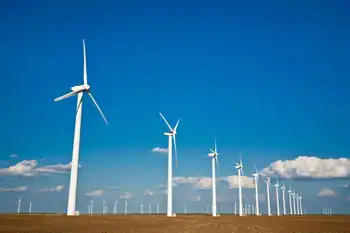Global warming or not, coal will remain king
By Investor's Business Daily
NFPA 70e Training - Arc Flash
Our customized live online or in‑person group training can be delivered to your staff at your location.

- Live Online
- 6 hours Instructor-led
- Group Training Available
Soaring oil prices and global coal shortages have powered the most recent bituminous run-up. Investors saw an additional boost when the chief economist for the International Energy Agency said coal will be the world's biggest energy source for the next 25 years.
In addition to providing energy and heat, coal is a key ingredient in steel, polysilicon and cement. It's far cheaper than oil or natural gas and has four times the reserves.
It also is powering Van Eck's Market Vectors Coal. (KOL) The exchange traded fund has soared 15% since May 2, when it climbed 5% over one day. The five-month-old fund, the first to follow the global coal industry, tracks the performance of the Stowe Coal Index.
Though it has 63% of its weight in its top 10 holdings, the index includes 40 coal production and transportation companies from 12 countries. All companies in the index have at least 50% of revenue from coal-related activities.
Many of those companies will provide the backbone of the world's energy supply through 2033, said International Energy Agency chief economist Fatih Birol. The agency is composed of major oil consumers — including the U.S. and European governments — who try to keep petroleum markets stable during times of crisis.
Right now, the biggest crisis is in China, where power plants are running out of coal. Many areas of the country now have just a seven-day supply of coal and some have only a three-day supply. A seven-day supply is considered dangerously low. Already, 32 power plants have shut down because they have no fuel.
The shortage has several causes. China relies on coal for 70% of its power. In addition to power demands fueled by massive Chinese growth, price controls have kept officials from building up coal supplies. Following the May 12 earthquake, 200 mines in Sichuan province shut down for safety inspections, further cutting the supply.
While the biggest coal demand comes from China and India, it's on the rise in Western nations, too. It provides about 50% of U.S. power, and 50 coal-fired plants are planned in European countries by 2013. The World Coal Institute estimates that about 17% of the world's coal goes to make steel.
Demand could get more voracious in the next few weeks if South Africa decides to limit its coal exports. The country, which is the biggest coal supplier to European electricity companies and the third-largest coal exporter, might limit exports to ease its own power crisis.
Some of the fund's top holdings reflect anticipation of coal's further rise. Massey Energy (MEE) helped boost the fund May 19 when it hit an all-time high of 67, and Peabody Energy (BTU) hovered around 79 on May 20.











